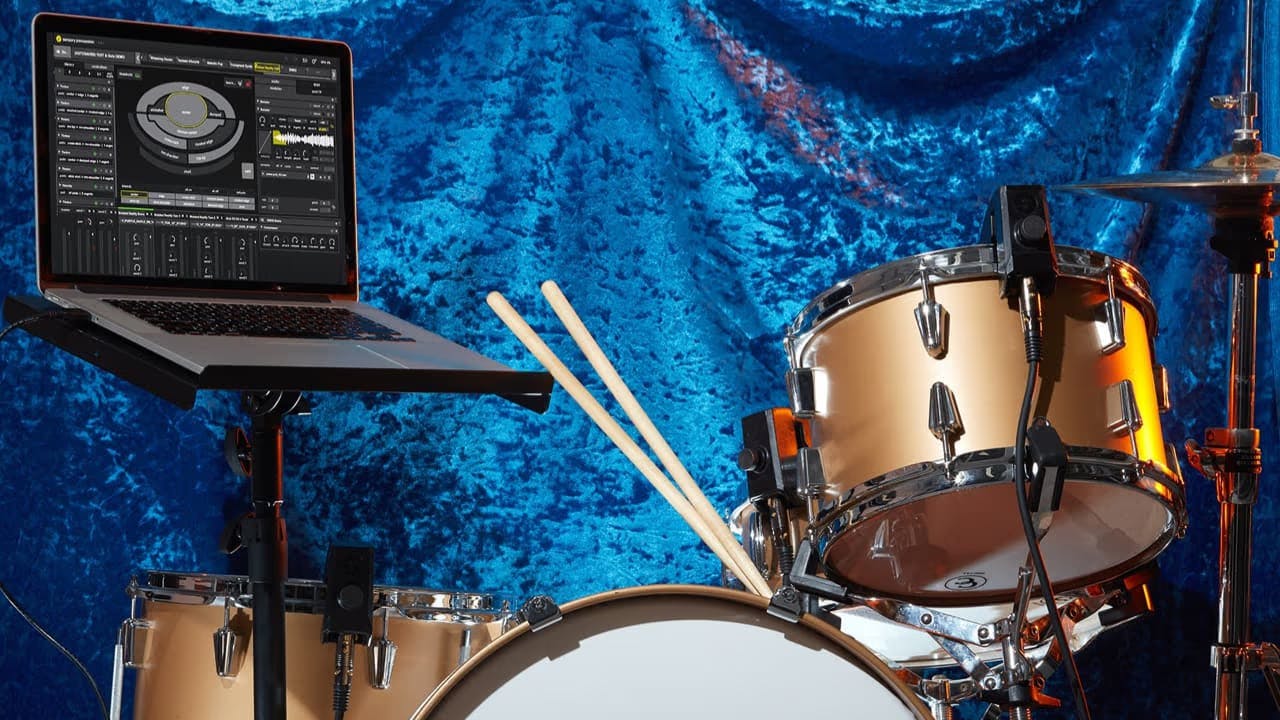
Imagine you want to control melody, harmony, and create complex soundscapes with your drumming. Or maybe you want to grab a sound from your album and control it onstage from the drums. Or produce a radio-ready track from behind the drums! Whatever the case, you'll quickly find that triggers and pads pale in comparison to what you can do in the studio with sequencers and effects.
This is a common problem for drummers: most music creation hardware and software is designed for keyboardists and guitarists. We drummers are left with what is essentially just buttons. And if we really want to get into music production, we have to leave the drums behind and learn an entirely new instrument!
Sensory Percussion is the only system that turns the acoustic sound of your drums into a nuanced controller of electronic sounds. Each zone of the drum makes a unique sound, and Sensory Percussion listens to the nuance of every strike allowing you to trigger and control any electronic sound that you want.
But it goes far beyond triggering, because you can use your drumming to control effects and samples in unique and complex ways. You can actually compose elaborate sound worlds with your drums!
Below are some videos of drummers playing Sensory Percussion, and descriptions of what exactly is going on. If you'd like to skip the videos and learn exactly how Sensory Percussion works, click here.
This was Eddie Cole's first time trying out Sensory Percussion. The drum has a single note sample mapped to the head of the drum and pitched to a scale, so that when he plays the edge of the drum the note is several octaves higher than when he plays the center.
This kit has percussive rock and leaf sounds blended across the drum. The earthy percussive sounds are pitched lower when he plays the center and higher when he plays the edge. There are also chords on a velocity threshold, so that they will only sound if he strikes the center, middle, or edge of the drum with enough force to engage the sampler. You can swipe through this video to hear what both Sensory Percussion, and the acoustic drum sound like in isolation.
You can combine the Sensory Percussion techniques in the first two videos above to create an instrument like the one in this video. There is a cycle of notes mapped to the head (and pitched to a scale based off of where on the head he plays), there are chords that only sound when you play hard, and there are percussive sounds mapped to the rim and rimshot.
There is a one-to-one ratio of what Sensory Percussion tracks and how a drum actually responds. Because Sensory Percussion is listening for the nuances of your playing, you can create the most realistic virtual drums by mapping detailed drum sounds to the zones in a very “matter of fact” way: Center hits are mapped Sensory Percussion's center zone, edge hits are mapped to the edge zone, cross sticks are mapped to the cross stick zone, etc. With velocity levels for each zone, you end up with a hyper-realistic virtual drum from just samples.
Marcus Gilmore performing an original piece of his, “Excerpts of Nube” on a hybrid kit. The chord sequence is mapped to the mesh drum on his right - each time he hits it, a new chord plays. The bass line is mapped and controlled by his kick drum: the pitch of the note is determined by how hard he plays the kick. An aggressive electronic tom bolsters his acoustic rack tom, and his snare is reinforced subtly with additional electronic sounds from Sensory Percussion. Watch the full version of this performance on our YouTube page.
Sensory Percussion is the most expressive and powerful system for electronic sound behind the drums, because it tracks timbre, speed, velocity, and all of the subtleties of your playing. Learn even more about how it works here.
